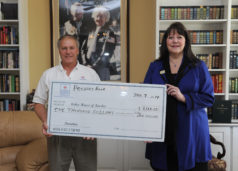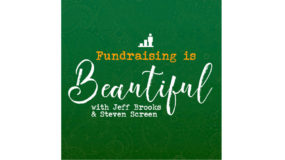When I was a young fundraiser, over two decades ago, I thought fundraising was sales. I had to sell major donors the case for support and do my best to move them to give a charitable gift.
I quickly realized this was a negative equation. I was taking from the donor but never really giving back. It was then I felt the need to report back to the donor, telling them how great they were for making the world a better place, but I didn’t know how to deliver this content.
Over the years I have found the best vehicle for reporting back to donors is your organization’s newsletter. If your newsletter is designed with the donor in mind and it communicates a strong sense of how important her role is in changing the world via your organization — magic happens! Your donor feels great about their recent gift and deepens their trust in you and your organization.
When using newsletters to report to major donors, I try to leverage these five elements. They have worked really well. Here they are.
- You don’t need to create a separate newsletter or report for your major donors. Use the same newsletter you create for your mass donors. This will save you time and money.
- Show your major donors that you spent time preparing the newsletter and outer envelope. Don’t fold the newsletter. Larger packages gain attention in the mail. Since you didn’t fold the newsletter you can deliver it in a large outer envelope. Hand address the envelope and use a real stamp to deliver it!
- You aren’t going to send a special newsletter (point #1) but you can draft a special, custom cover letter to include with the newsletter. Address the letter to your donor, tell your donor how great you think they are, and thank them for making the world a better place.
- If there is a special article or section of the newsletter you want to bring to their attention, then use a post-it note, paperclip, or highlighter to mark that section of the newsletter. In your cover letter, tell the donor why you marked that section for them.
- As a major gift fundraiser you are always looking for a good reason to contact the donor, so call them prior to the newsletter being delivered to let them know it is on its way! During your call you can say the same things you say in the cover letter.
Just know that your major donors are people that care deeply about your mission. They care about your work and the people you serve. They care about all of this so much that they are even willing to send you money so that your good work can continue! They deserve something in return for their gift and the newsletter is the best vehicle I know of to deliver good news and appreciation to your donors.
Jim Shapiro is the fundraising coach you’ve always wanted, the proven Sherpa who can help you get to the top of the mountain. Jim has 30 years’ experience raising money, including serving as the VP of Development for a global $100m nonprofit. He co-founded The Better Fundraising Co. to help small-to-medium nonprofits raise more money.









Greetings Mr. Shapiro,
I have a small non-profit that has served our underserved population for a decade teaching plant-based nutrition classes and cooking demos. We provide other events for the community. This is our first year to have received donations from 4 donors. Our last event was September 2023. I did send a thank you note to all 4 donors, along with gifts. Is it too late to send a newsletter, cover letter to my donors. Are infographics necessary?
Hi Diane, this is Steven answering on Jim’s behalf. It’s not too late to report! However, instead of taking the time to create a newsletter for 4 donors, we would simply write up the story of how one person benefitted from one of your programs, then share that one story with each donor and thank them for helping to make it possible. Ideally you could share the story (and a photo of the person if possible) with each donor in person. If in person isn’t possible, then via text or a personal email. And no, you don’t need infographics – a photo and story of a beneficiary works better than an infographic in our experience. Good luck!